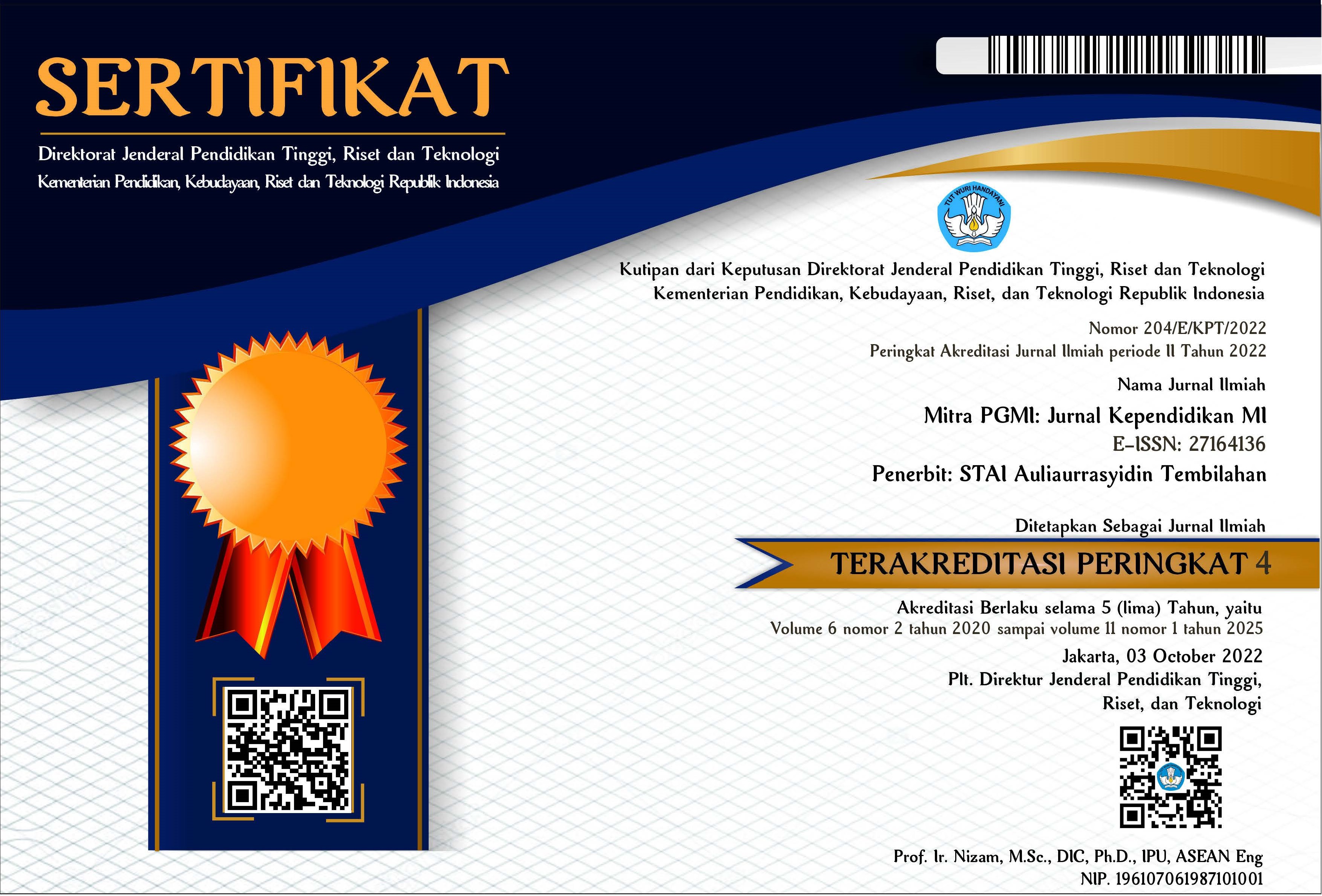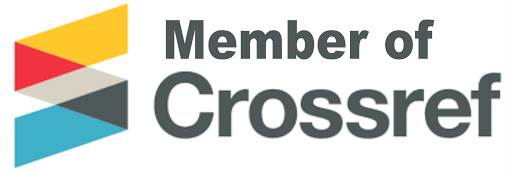Penerapan Kurikulum 2013 di Madrasah Ibtidaiyah Walisongo Kranji 01 Pekalongan
DOI:
https://doi.org/10.46963/mpgmi.v8i2.556Keywords:
Curriculum, Implementation, Madrasah IbtidaiyahAbstract
The curriculum is the totality of activities designed by schools to provide various experiences for students, both inside and outside the classroom. The curriculum is not only synonymous with subject matter, but all activities designed by schools to develop students' self-capacity are also included in the curriculum. Education is a human process that must be developed according to human needs. Human needs always develop all the time along with the rapidly changing times. Madrasah Ibtidaiyah (MI) 01 Kranji is an Islamic educational institution that is sensitive to the special needs of the surrounding community. This institution responds to community needs by developing a leadership curriculum. The curriculum is an answer to the needs of people who are concerned about the condition of youth who do not have leadership characteristics such as responsibility, discipline, courage, honesty and cooperation. This study seeks to reveal the curriculum model that was applied and developed by MI Walisongo 01 Kranji. The research method that the author uses is descriptive qualitative using data collection techniques, interviews, documentation, and observation.
Downloads
References
Asmani, & Ma'mur, J. (2010). 7 Tips Aplikasi PAKEM. Yogyakarta: DIVA Press.
Fadlilah. (2013). Implementasi Kurikulum 2013 dalam Pembelajaran MI/SD. Jakarta: Ar Ruzz Media.
Kurniaman, O., & Noviana, E. (2017). Penerapan Kurikulum 2013 dalam Meningkatkan Keterampilan, Sikap, dan Pengetahuan. Jurnal Primary.
Majid, A. (2014). Pembelajaran Tematik Terpadu. Bandung: Remaja.
Mulyasa, E. (2017). Guru dalam Implementasi Kurikulum 2013. Bandung: Remaja Rosdakarya.
Pratikto, H. H. (2019). Implementasi Kurikulum 2013 dan Permasalahannya (Studi Kasus di SMK Ganesa Kabupaten Demak). Jurnal Pawiyatan
Downloads
Published
Issue
Section
License
Copyright (c) 2022 Tri Mulyani, Adhisa Kartikawati, Maulida Nur Fadhilah, Aan Fadia Annur

This work is licensed under a Creative Commons Attribution-ShareAlike 4.0 International License.
Authors who publish with this journal agree to the following terms:
1. Copyright on any article is retained by the author(s).
2. The author grants the journal, right of first publication with the work simultaneously licensed under a Creative Commons Attribution shareAlike 4.0 International License that allows others to share the work with an acknowledgment of the work’s authorship and initial publication in this journal.
3. Authors are able to enter into separate, additional contractual arrangements for the non-exclusive distribution of the journal’s published version of the work (e.g., post it to an institutional repository or publish it in a book), with an acknowledgment of its initial publication in this journal.
4. Authors are permitted and encouraged to post their work online (e.g., in institutional repositories or on their website) prior to and during the submission process, as it can lead to productive exchanges, as well as earlier and greater citation of published work.
5. The article and any associated published material is distributed under the Creative Commons Attribution-ShareAlike 4.0 International License








2.png)


